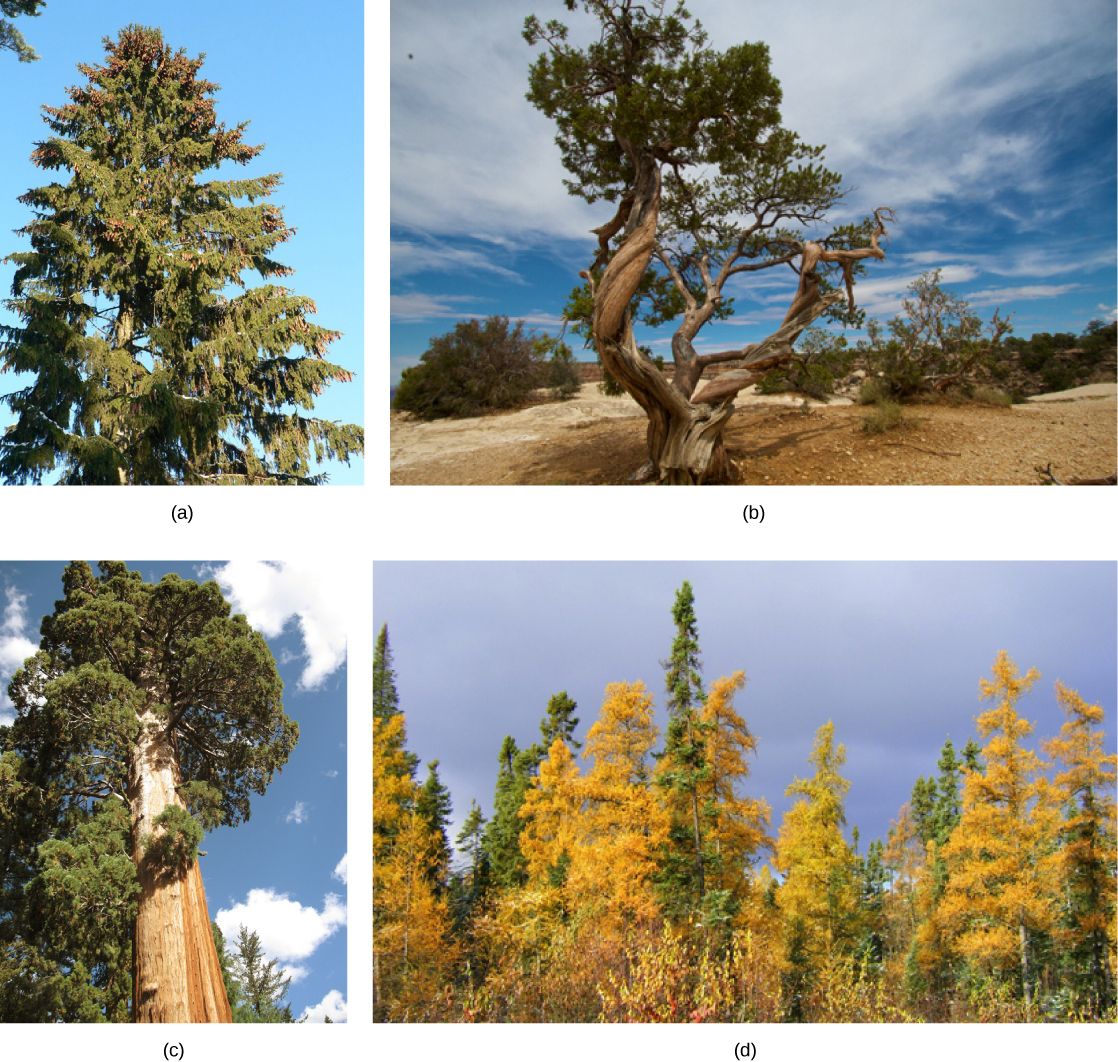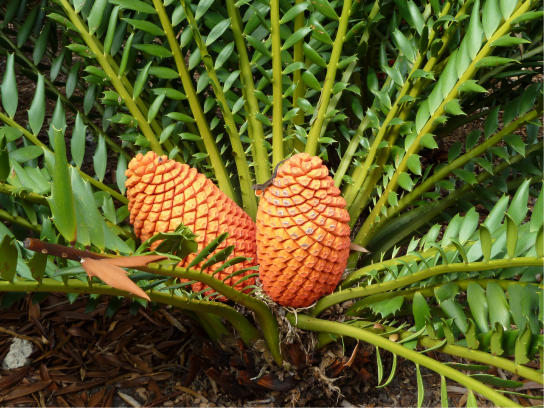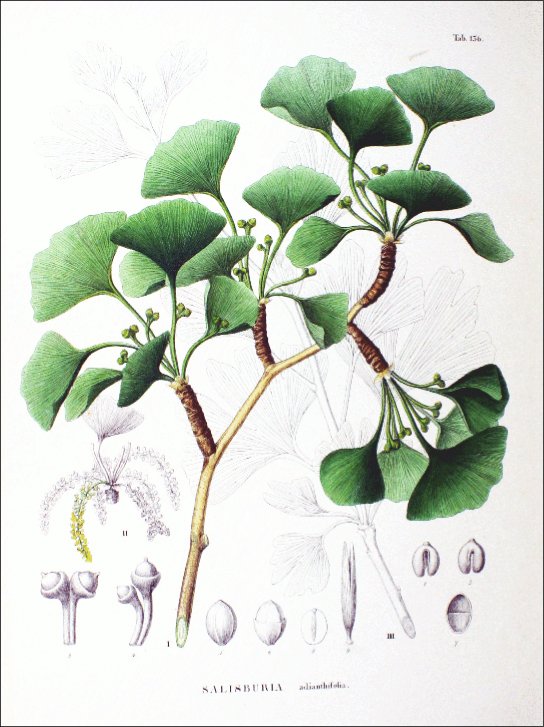| << Chapter < Page | Chapter >> Page > |

Cycads thrive in mild climates, and are often mistaken for palms because of the shape of their large, compound leaves. Cycads bear large cones ( [link] ), and may be pollinated by beetles rather than wind: unusual for a gymnosperm. They dominated the landscape during the age of dinosaurs in the Mesozoic, but only a hundred or so species persisted to modern times. They face possible extinction, and several species are protected through international conventions. Because of their attractive shape, they are often used as ornamental plants in gardens in the tropics and subtropics.

The single surviving species of the gingkophytes group is the Gingko biloba ( [link] ). Its fan-shaped leaves—unique among seed plants because they feature a dichotomous venation pattern—turn yellow in autumn and fall from the tree. For centuries, G. biloba was cultivated by Chinese Buddhist monks in monasteries, which ensured its preservation. It is planted in public spaces because it is unusually resistant to pollution. Male and female organs are produced on separate plants. Typically, gardeners plant only male trees because the seeds produced by the female plant have an off-putting smell of rancid butter.

Gnetophytes are the closest relative to modern angiosperms, and include three dissimilar genera of plants: Ephedra , Gnetum , and Welwitschia ( [link] ). Like angiosperms, they have broad leaves. In tropical and subtropical zones, gnetophytes are vines or small shrubs. Ephedra occurs in dry areas of the West Coast of the United States and Mexico. Ephedra ’s small, scale-like leaves are the source of the compound ephedrine, which is used in medicine as a potent decongestant. Because ephedrine is similar to amphetamines, both in chemical structure and neurological effects, its use is restricted to prescription drugs. Like angiosperms, but unlike other gymnosperms, all gnetophytes possess vessel elements in their xylem.

Gymnosperms are heterosporous seed plants that produce naked seeds. They appeared in the Paleozoic period and were the dominant plant life during the Mesozoic. Modern-day gymnosperms belong to four phyla. The largest phylum, Coniferophyta, is represented by conifers, the predominant plants at high altitude and latitude. Cycads (phylum Cycadophyta) resemble palm trees and grow in tropical climates. Gingko biloba is the only representative of the phylum Gingkophyta. The last phylum, Gnetophyta, is a diverse group of shrubs that produce vessel elements in their wood.
[link] At what stage does the diploid zygote form?
[link] B. The diploid zygote forms after the pollen tube has finished forming, so that the male generative nuclei can fuse with the female gametophyte.

Notification Switch
Would you like to follow the 'Biology' conversation and receive update notifications?